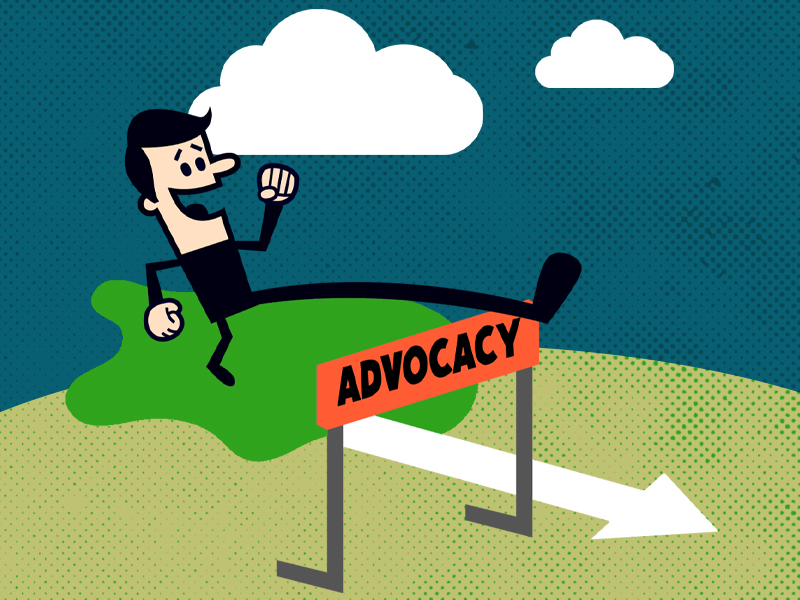
Advocacy Hurdles: How to Fix Your Public Affairs Campaign
When you’re a part of an advocacy campaign, spotting issues and fixing them are not always easy. In the realm of advocacy, there will always be bumps in the road, that is the nature of making change. Identifying common advocacy hurdles and proactively planning for solutions is a good strategy that can improve your campaign.
Here are some of the most challenging advocacy hurdles we have encountered and the strategies to get through them. If you have any questions always feel free to reach out.
Changes in the process: You should expect for the advocacy process to evolve continuously. Start with some assumptions about processes like committees and vote dates. but be prepared for changes. We advise you to anticipate earlier votes, adjust your timeline accordingly, and use the extra time to garner more support.
Lack of urgency: Urgency is a powerful motivator for your supporters. If you don’t have it, you are in trouble. You need to build and feed urgency, within reason. Make sure folks inside and outside your coalition understand the importance and need. Know your plan – but be careful with overemphasizing urgency when it is not realistic as this could lead to burnout.
Legislation changes: Legislation is dynamic and can change throughout the process. Ensure your coalition is on board and understands this. A lack of engagement or understanding of how the process works can lead to unclear results or a fractured coalition.
Sponsor disengaged: Just because someone sponsors your legislation does not mean they are as driven as your coalition members. Continuing to check in and engage your sponsors is key to overcome this hurdle.
Lack of clear legislative support: Verbal support doesn't necessarily translate into sponsorship or active support for legislation. Make sure you have built relationships over time and engaged legislators to understand the urgency of your issue. This is important!
Coalition distracted: Just because your coalition agrees on the importance of the advocacy campaign does not mean they do not have other commitments. Keeping your coalition informed and engaged is vital.
Coalition disagreements: In advocacy and coalition politics, disagreements are inevitable. Make sure you develop a process to address contentious issues and foster strong bonds to work through problems. This practice will help you build your coalition's power for the long term.
Active opposition: If you are making change there will be factions who are against it. Get ready and expect opposition. Make sure you map out what your opposition plans are and create a direct-action organizing chart to counter.
Lack of public presence: Building a public presence in specific legislative districts is crucial for engagement, but recruiting advocates, especially in specific districts, takes time.
No grasstops: Understanding pressure points for advocacy requires power mapping. Identifying individuals at a high level who can engage decision-makers makes a significant difference, though it takes time to build these connections.
Meager grassroots: Building grassroots support in key geographic areas or specific districts is a core component of modern advocacy. Whether through geo-fencing or identifying potential advocates near decision-makers, this process takes time.
No clear message: A lack of a clear message is a big problem, but is easily solved through collaborative exercises like a message box.
A murky process: Oh yes, the process is not always clear if you are doing advocacy around executive branches, corporate accountability, or a regulatory change. It gets murky. Understanding past processes and clearly defining the change you seek, along with identifying key decision-makers, is crucial. Use a direct-action organizing chart as well as a power mapping exercise to help remove all the murkiness or ambiguity of the process. This will also help develop realistic paths for engagement.
Bill dies: Yep. This happens. Take it as a sign to regroup and figure out what did not work. Ask reflective questions. Is the legislation, right? Is the issue relevant? What was your approach? Should you try again or try something different?
Lack of a plan: Do planning sessions ahead of time. Don’t go into a legislative session without a plan.
No process to evaluate success: Integrate program evaluation into your advocacy plan from the beginning. You can check out our program evaluation eBook here. By being proactive, you can set goals for success ahead of time and have markers to achieve them.
Prepare for advocacy hurdles, plan for them, and embrace the challenges. There is power within the obstacles of an advocacy campaign. If you harness the power of the hurdles, you can make your campaign stronger.
Have questions about advocacy hurdles and how to get on the right track? Drop us a note, we are happy to connect with you.